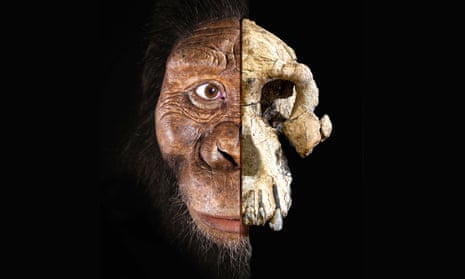Imagine uncovering a fossil that challenges everything we thought we knew about our origins. In Ethiopia’s Afar Region, scientists have done exactly that. Fossilized teeth dating back approximately 2.6 million years have been identified as belonging to a previously unknown species of Australopithecus, expanding the complex tree of human evolution.
This discovery is more than just a set of teeth—it is a window into a world where multiple human ancestors coexisted, adapted, and shaped the story of what it means to be human.
Ethiopia: The Cradle of Humanity
The Afar Region of northeastern Ethiopia is one of the most important sites for understanding human evolution. Over the past century, it has yielded extraordinary finds, including:
-
Lucy (Australopithecus afarensis), discovered in 1974, a 3.2-million-year-old skeleton that transformed our view of early bipedalism.
-
Fossils of Ardipithecus, dating back over 4 million years, offering clues to even earlier ancestors.
-
In 2013, the earliest known Homo specimen, pushing back the origins of our genus.
Now, with the addition of this new species of Australopithecus, Ethiopia once again reshapes our understanding of the prehistoric past.
The Teeth That Spoke Volumes

Teeth are among the most durable parts of the body, often surviving when other bones decay. These newly discovered fossils reveal distinct features that set them apart from known Australopithecus species.
Compared to Australopithecus afarensis, the teeth are:
-
Different in size and proportion.
-
Shaped in ways that suggest dietary differences.
-
Indicators of ecological specialization, meaning this species occupied a niche previously unrecognized in the hominin lineage.
Such subtle but significant differences are what allow paleoanthropologists to identify new species from fragmentary remains.
Coexisting With Early Homo

One of the most remarkable aspects of this discovery is its timing. The new Australopithecus species lived alongside early members of the genus Homo, including the specimen discovered in 2013 at Ledi-Geraru.
This overlap challenges the traditional linear model of human evolution, which long imagined a straight progression from one species to the next. Instead, the evidence paints a picture of a branching tree, with multiple hominins coexisting, experimenting with survival strategies, and evolving in parallel.
It suggests that our story is not one of replacement, but of diversity.
What the Teeth Reveal About Diet and Lifestyle
The size and wear of the teeth point to dietary habits that differed from those of Lucy’s species. While Australopithecus afarensis consumed a mixed diet of fruits, leaves, and possibly roots, the new species may have adapted to harder, more fibrous foods.
Such differences would have allowed hominin species to share overlapping environments without direct competition. Each group carved out its own survival strategy—an essential factor in the evolutionary process.
The Bigger Picture: Human Evolution as a Web

For much of the 20th century, human evolution was depicted as a straight line: ape → Australopithecus → Homo habilis → Homo erectus → Homo sapiens.
But discoveries like this force us to rethink that model. Instead of a ladder, human evolution looks more like a bush or web, with many branches sprouting, flourishing, and sometimes dying out.
This branching diversity means that our ancestry is not a simple tale of progress but a dynamic story of experimentation, adaptation, and resilience.
Strange But True: Shared Time, Shared Space
It is almost startling to imagine that the newly identified Australopithecus species and early Homo specimens were neighbors in the same landscape. They may have:
-
Used different tools or foraged differently.
-
Lived in separate groups but crossed paths at water sources or feeding grounds.
-
Faced the same predators and environmental pressures.
The idea that our genus Homo coexisted with other hominins for hundreds of thousands of years underscores the complexity of human origins.
Why This Discovery Matters

Every fossil adds a piece to the puzzle, but this one is especially significant:
-
It diversifies the picture of early hominins, reminding us that our lineage was not alone.
-
It challenges outdated models of linear evolution, replacing them with a richer, more nuanced story.
-
It emphasizes the value of fieldwork, showing that even small fragments like teeth can transform our understanding of deep history.
The find also highlights the importance of protecting fossil sites. The Afar Region continues to yield invaluable insights, but these discoveries depend on international collaboration, funding, and careful excavation.
Looking Ahead: Questions Still Unanswered
As with all major discoveries, the identification of this new Australopithecus species raises more questions than it answers:
-
How exactly did it interact with early Homo?
-
Did it use tools, or show signs of culture?
-
What ecological pressures led to its extinction while Homo survived?
Future digs and genetic analysis (if possible) may help resolve these mysteries. For now, the teeth stand as tantalizing clues.
Conclusion: One Ancestor, Many Stories
The discovery of a new Australopithecus species in Ethiopia underscores a profound truth: human evolution was never a straight road but a winding journey with many travelers.
From Lucy to the earliest Homo, from teeth to entire skeletons, each fossil deepens our appreciation of the fragile yet resilient path that led to us. The newly uncovered species reminds us that our origins are shared, diverse, and far more complex than a simple ladder of progress.
In every human smile today lies a connection to those ancient teeth buried in Ethiopian soil—a reminder that our story is written not by one ancestor, but by many.